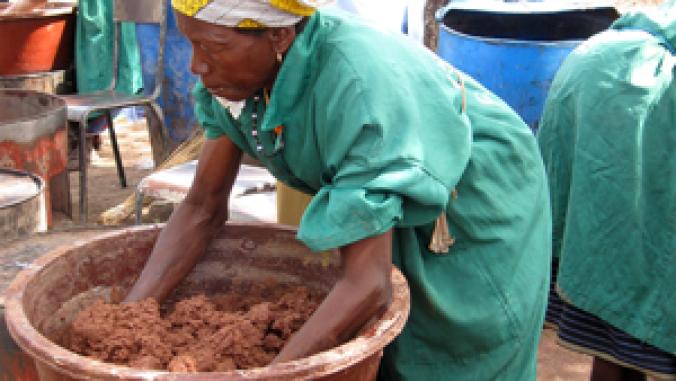How Cisco's Packaging Diet Saves $24 Million a Year
<p>The technology giant has implemented three best practices as part of a sustainability pilot project that are netting huge savings in materials and transportation costs as well as waste management.</p>

My last post here, "How to Work with Your Vendors to Go on a Packaging Diet," was born of the frustration my colleagues and I felt from dealing with the wasteful and at-times absurd amount of packaging our IT products are shipped in. In it, I challenged ITC suppliers to reduce packaging, and since that time, I have found a perfect case study proving the benefits of going on a "packaging diet."
I visited with several members of Cisco's supply chain team working toward a comprehensive Sustainable Value Chain strategy. Overseen by Edna Conway, the company's Senior Director of Advanced Compliance and Social Responsibility, Cisco's environmentally sound packaging program is still evolving and not fully rolled out, but early results show what is possible.
Small Changes, Big Results
The savings that Cisco is seeing from its packaging diet are sensational, to say the least: The pilot program alone would lead to $24 million in annual savings. And by focusing on packaging material content, volume and transport container efficiency, the company will save on materials and transportation costs as well.
One product line reduced packaging by 33 percent and increased transportation load utilization by 50 percent resulting in $1.3 million annual savings. The most dramatic improvement for a product was 450 percent increase in transportation efficiency with savings of $1.8 million. Cisco's efforts provide the necessary business case for other ITC providers to green their packaging.
More than 4 million pounds of materials were eliminated across the pilot products. In addition, progress was made to increase recycling potential. From an environmental perspective, greener packaging resulted in decreased energy and water use while reducing GHGs related to transport.
Transportation costs were a major contributor to costs since Cisco supports global manufacturing and a global customer base. Much of the product is shipped at some part of its journey via air which is the most expensive transport method, both financially and environmentally. As reported by the Environmental Protection Agency (EPA), shipping by air compared to ship creates nearly 20 times as much GHG for the same ton-mile shipped.
Cisco selected high volume products from its wide range of product families to participate in the pilot program, and the chart below lays out the savings Cisco will earn from the project.

When trying to digest the millions saved, I noticed that for each pound of packaging material that Cisco reduced, more than $5 of annual savings was achieved for those products participating in the pilot. The type of materials, weight, volume and transportation methods could change how many dollars are saved per pound.
A "per pound saved" metric is simple to conceptualize. Most of us are able to imagine removing at least one pound of materials and thus provides a good starting point for brainstorming new packaging design. It is also a helpful metric when comparing savings across product lines.
Three Guidelines for a Packaging Diet
Cisco's new packaging practices are compared to the three best practices reviewed in my previous post: Eliminate, right-size and sustain.
1. Eliminate.
Paper-based documentation was digitized and migrated to CDs or "pointer cards" -- 3 x 5 inch cards with online references. The intention is to use pointer cards whenever documentation is not mandated by regulation. As you can see in the image below, Cisco's IP phone benefited from documentation reduction. Now three phones can be shipped in the same space that previously could only support two units -- a 50 percent improvement.
Cisco also looked for activities that could be eliminated. For example, with its CSR product, the old method was to depopulate and package cards after testing. By leaving the cards in the rack, Cisco was able to eliminate an entire crate. Cisco also reduced labor by no longer removing and packing the cards.

2. Right-size
Although cushioning is still required, Cisco took a solid piece of cushioning and reduced the materials used without any performance degradation.
Cisco also eliminated a plastic bag type that could not be recycled and replaced it with a thinner and recyclable bag.
For multiple unit shipments, engineers reviewed the shipment holistically -- like a 3-D puzzle -- to optimize the footprint. For Cisco's Telepresence CTS-3000, product engineers were able to increase packing capacity by 450 percent. Nine units now fit on a single truck while only two units could be transported per truck prior to re-engineering the packaging.
3. Sustain
Cisco is making recycling easier through better design of its packaging. "Pizza" type boxes were made easier to compress. One distribution center uses honeycomb paper pallets that can also be easily recycled. On some products, Cisco is using plastic pallets made out of material that can be recycled.
Edna Conway shared, "Through the efforts of our purchasing, engineering and reverse logistics teams, over 99 percent (by weight) of our packaging can be recycled in regions with robust recycling processes in place." Cisco notes however, that the feasibility of achieving this volume of recycling varies by geographic regions.
Cisco is committed to supporting the market for recycled plastics and cardboard by purchasing recycled materials. For example, Cisco used 100 percent recycled cushioning in one router family. The thermoformed cushions, from Reflex are made from 100 percent recycled polyethylene, and include juice and milk jugs as part of its recycled PE content. Previously these cushions were largely made from virgin oil.

Cisco is exploring Reflex or similar product for broader expansion, but Conway observed that material availability still constrains what Cisco and the industry can do.
Cisco is looking for opportunities to go even further in partnership with its supply chain. Cisco's distribution centers and logistics providers reuse pallets; buying used pallets from recyclers that are pre-inspected and repaired as needed.
Approaching Suppliers as Partners
Nearly all of Cisco's manufacturing is outsourced; consequently, in order to make improvements, Cisco needed to engage with its more than 1,000 suppliers. Cisco invited suppliers to participate in industry organizations to show suppliers that packaging was more than a Cisco issue and that greener packaging had broad industry support.
{related_content}Cisco also emphasized how suppliers would share the benefits of improved packaging. "We are collaborating with our suppliers on packaging innovation which they can use to differentiate themselves from their competition," Conway told me.
A partnership between suppliers and Cisco was critical to the process and packaging innovation Cisco has achieved to date. "My job is to frame the challenge to inspire our supply chain partners and our own engineering and manufacturing talent to find creative ways to both protect the product and the environment," Conway said.
Cisco packaging engineers and colleagues from many other organizations rose to that challenge to develop a smaller packaging footprint. It was a collaborative effort among teams across the organizations including product, documentation and packaging teams. Critical to their success was working together in order to see the impact of each team's design to the whole. Customers also played a part in the process to identify areas that were inefficient.
Cisco's packaging project is more than a one-time effort. Greener packaging will now be incorporated as part of Cisco's value engineering process. Existing product lines will be incorporated based on potential for reduction.

Cisco is sharing its practices with and learning from industry groups to ensure that we are all motivated and have knowledge to put greener packaging in-place. Follow Cisco's lead. Go green and prosper. As Edna Conway said, "Packaging sustainability provides empirical evidence that green is good for the bottom line."
[Author's Note: Cisco has provided me with a PDF outlining its Sustainable Value Chain Management action plan, which also goes into further details of some of the product examples mentioned above.
And for more from Edna Conway, Senior Director, Advanced Compliance & Social Responsibility for Cisco's Customer Value Chain Management organization, please see this article she wrote for Supply & Demand Chain Executive magazine: "Tackling Green in the IT Supply Chain," as well as an article in Packaging magazine profiling her work: "Get ready for REACH and RoHS 2."]
Claudia Girrbach is a Senior Director in the IT department at Gap Inc., as well as a member of the company's EcoCouncil and Employee Engagement Team. She also authors the blog Going Green - Tips for Business.
Photos provided by Cisco.





